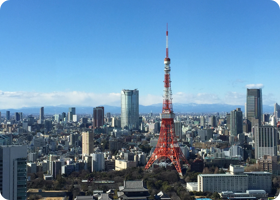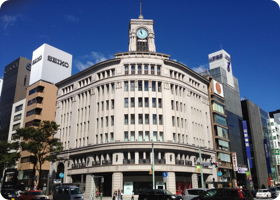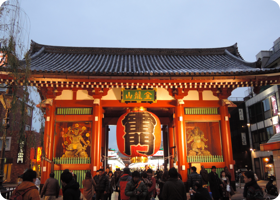1.866.316.7268 [email protected]
The group will be visiting the outer market of Tsukiji Market on the Tokyo Morning Optional tour – Tsukiji Market. Wander through many of the shops selling traditional Japanese foods required for preparing Japanese cuisine, the shops selling Japanese cooking utensils, restaurants, Japanese seafood and observe how a whole tuna is cut up into sushi and sashimi. For lunch, you can go to a restaurant near the market that is popular with locals, and owned by the self-proclaimed “tuna king” for a sushi lunch (lunch not included). Or, you can purchase some items from the many shops and eat it at the break area for lunch. After lunch, the afternoon is free to explore Tokyo on your own. It is a short walk to the Kabukiza theater. There, you can attend one act of a Kabuki play if a play is scheduled on that day. Admittance is first-come, first-serve, and you will have to wait in line to get in. Ask the guide for availability, admittance procedures and the schedule for that day if you are interested.

Tokyo Tower is a communications and observation tower in the Shiba-koen district of Minato, Tokyo, Japan. At 333 metres, it is the second-tallest structure in Japan. Built in 1958, the structure is an Eiffel Tower-inspired lattice tower. In addition to being a popular tourist spot, Tokyo Tower serves as a broadcast antenna. From the observation deck at 150 meters, on a clear day you can not only see all of Tokyo but the also the iconic Mt. Fuji.

The Ginza is Tokyo’s most famous upmarket shopping, dining and entertainment district, featuring numerous department store, boutiques, art galleries, restaurants, night clubs and cafes. One square meter of land in the district’s center is worth over ten million Yen (about $90,000 USD), making it the most expensive real estate in Japan, and possibly even the world.

When entering the temple district, visitors first enter through Kaminarimon (Thunder Gate), the outer gate of Sensoji Temple and the symbol of Asakusa and the entire city of Tokyo. A shopping street, called Nakamise, leads from Kaminarimon to Sensoji Temple. There are numerous shops selling traditional souvenirs and local snacks. Sensoji Temple was built in 645. The legend says that in the year 628, two brothers fished a statue of Kannon, the goddess of mercy, out of the Sumida River. Even though they put the statue back into the river, it always returned to them. Consequently, Sensoji Temple was built nearby. It is Tokyo’s most popular temple. Asakusa Shrine, built in the year 1649 by Tokugawa Iemitsu stands only a few dozen meters to the left of the temple’s main building.
Don’t hesitate to contact us. We are an expert team and we are happy to talk to you.
1.866.316.7268
